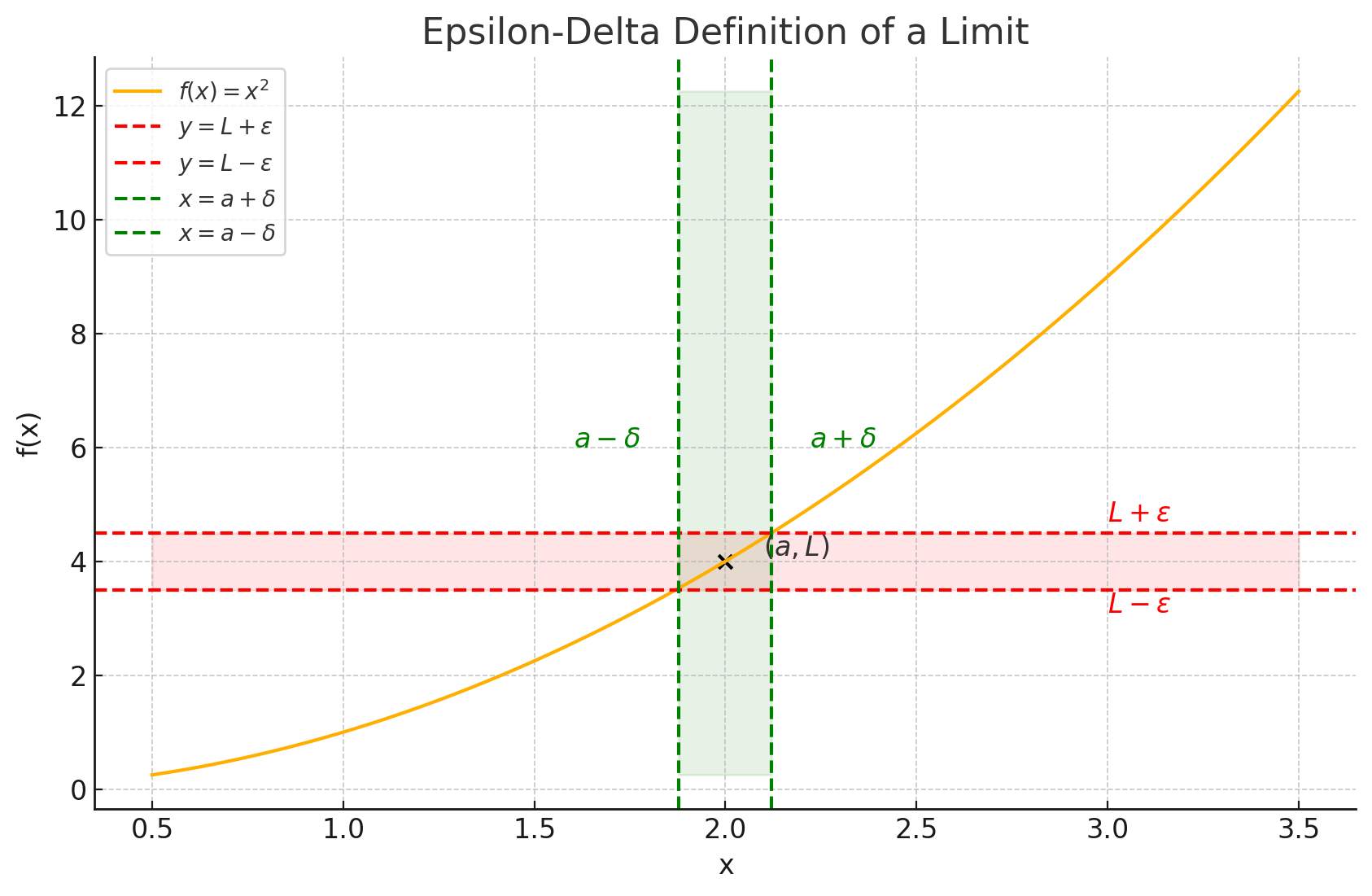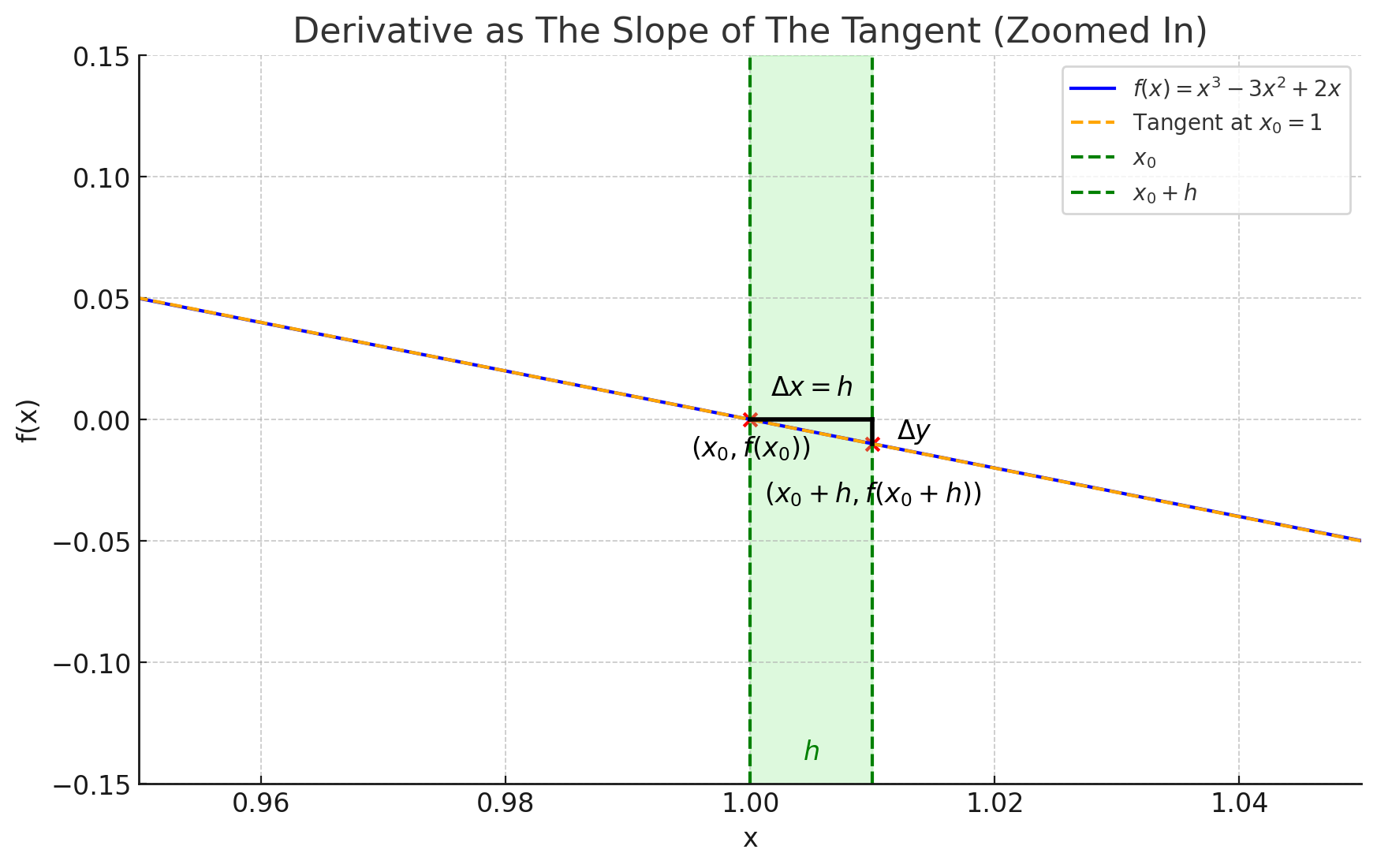Time spent: 5.5h
Total: 5.5h/10000h
I reflected on my earlier math study sessions and noticed that my attention was spread all over the place. I’m not really sure if anything stuck with me from those sessions.
I figured it’d be good to over basic calculus concepts again to establish a good base. I’ll probably have to do more rigorous study of calculus later on anyway, either for school or for other purposes. Unfortunately, there aren’t many code-based things one can do with the topics gone over today, so I’ll just have to stick to a mathematical approach.
Limits
The limit L of a function as approaches is denoted as .
Simply: What value is getting closer to as gets closer to ? Limits are a very intuitive concept. For example, it would be easy to imply that approaches no matter what value approaches, since the value never changes anyway. Hence, . Similarly, it would be easy to imply that .
For a limit to exist at , the function must approach the same value from both directions. This is where one-sided-limits come into play. When it does, the function is considered to be continuous at . A function is considered continous on the interval when it has a limit at every value of .
Limits get slightly trickier when there is something like division by zero involved. Algebraic manipulation is often required. There’s also L’Hôpital’s Rule for solving limits with an indeterminate form, like or .
Example 1. Evaluate .
Solution:
The Formal Definition
A limit is defined precisely when for any there is some , so that for all we have .
Whoa! That is a lot of mathematical notation. Let’s break it down a bit. The inequalities can be simplified:
- The inequality simply states that the distance between and is more than but less than . You can look at it like this: .
- Similarly the equation states that the distance between and is less than .
Both of these are conveniently illustrated in the graphic below:
Just imagine and getting smaller and smaller, all the way down to infinitesimally small numbers.
Derivatives
The derivative of a function , denoted or , is defined as:
We’ll look into the formal definition in more depth soon. Let’s start with the intuitive definition: the derivative is the slope of the tangent of a function. Essentially, how fast is a function rising at a certain point? This is illustrated in the graphic below:
How does the definition of the derivative play into this? In the definition, is approaching zero, so it should really be treated like it. But it helps to set to some slightly larger value for intuition purposes. Take a look at the graphic below:
Starting to see a pattern? There are two points: and . The derivative is the average rate of change between these two points. Just imagine taking the average rate of change over any normal line - you have . Here the two points of the line are the points mentioned. is just and is the length of the line, or otherwise put, the change of x, .
In reality however, an image like this wouldn’t be possible since would be an infinitesimally small number - but the principle stays the same.
Example 1. Evaluate , where
Solution:
- Substitute into the definition:
- Simplify:
Conclusion
I found some notes on derivatives I had written some time ago, they are available here. I probably put too much effort in this one haha. Roughly 6 hours spent learning and writing today. Perhaps I should try measuring my time spent more precisely.


